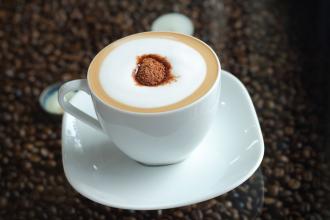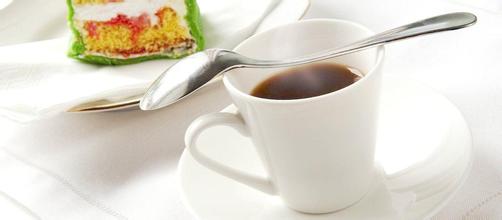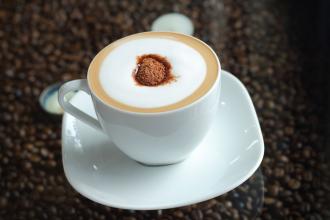What are the main types of coffee trees?
Main species of coffee trees: Liberian species
The Liberian species, the large-grained species, is native to Liberia in Africa, as well as a few countries such as Malaysia. Its cultivation history is slightly shorter than the other two coffee trees. Liberian coffee trees are suitable for growing in lowlands. Its trunk is high and strong, it is 18 meters high, its leaves are large and tough, and its fruits and coffee beans are also very large. Its seed coat is close to the seed kernel and is scarlet when it is mature. The quoted flavor is strong, the caffeine content is medium, the irritation is strong, and the quality is poor. Because of its unique taste, low demand and small cultivated face value, it produces less than 5% of the world's coffee production.
The main species of coffee trees: Esesa species
Ethel sa is a variety discovered in 1904, which is native to the Charlie River Basin in Africa, with small fruit and high yield per plant, especially a drought-resistant variety. The product has a strong flavor, slightly bitter taste and less cultivation.
Main species of coffee trees: Arabica species
The first is Arabica beans, which account for 70% of the world's output. The world-famous Blue Mountain Coffee and Mocha Coffee are almost all Arabica. The other is the Robasta species, which is native to the Congo in Africa and accounts for about 20% to 30% of the world's output. Different varieties of coffee beans have different tastes, but even the same varieties of coffee trees have their own unique flavor due to the influence of different soil and climate. The other two species are Liberian species and Esselsa species.
The shape of the bean is small, the front is long oval, the middle crack is narrow and tortuous, and the arc on the back of the bean is flat.
Arabica coffee is grown in Brazil and Colombia in South America, Central America, Costa Rica in the Caribbean, Guatemala, Jamaica, Mexico and Ethiopia. Arabica coffee beans are large, uniform in size and glossy in color. Coffee beans that are generally familiar to everyone, such as Santos in Brazil, Mantenin in Sumatra, Yemenmoka and the Blue Mountains in Jamaica, are all high-quality coffee beans grown in Arabica.
Arabica coffee is more difficult to grow, they like mild days and colder nights, too cold, too hot, too humid climate can be fatal to it. Coffee trees in Arabica need to be planted on sloping slopes at high altitude. they grow luxuriantly in the highlands (600-1800 meters) and require special climatic conditions-the average temperature throughout the year is about 20 degrees Celsius and there is plenty of rainfall without frost.
Only more than 50 countries in the world have such conditions, all of which are about 160 kilometers north and south of the equator. Its harvesting must be carried out manually, which is more difficult. However, due to the excellent aroma, balanced taste and low caffeine content of Arabica coffee beans, the actual planting amount accounts for about 70% of the total coffee planting.

Important Notice :
前街咖啡 FrontStreet Coffee has moved to new addredd:
FrontStreet Coffee Address: 315,Donghua East Road,GuangZhou
Tel:020 38364473
- Prev

The characteristics of coffee taste the best fried coffee has a stable taste.
Coffee is the product of 15 degrees north latitude from the equator, so it is produced in South America, Indonesia and Africa. However, the coffee produced from the equator to 15 degrees north latitude is so strong and bitter that only some people who drink coffee and do not know its taste will like it. In fact, the best coffee should be produced between 15 degrees north latitude and the Tropic of Cancer. Coincidentally, the southern part of Yunnan Province in China
- Next

Can coffee be brewed with different varieties mixed together
Blended Coffee Blended Coffee, also known as blended coffee, is one of the generic names for coffee classification. Blended coffee does not refer to a specific coffee, but generally by three or more different varieties of coffee beans, according to its taste of acid, bitter, sweet, fragrant, alcohol and a unique flavor of coffee. A premium blend of coffee is fragrant, smooth and refreshing after blending.
Related
- Does Rose Summer choose Blue, Green or Red? Detailed explanation of Rose Summer Coffee plots and Classification in Panamanian Jade Manor
- What is the difference between the origin, producing area, processing plant, cooperative and manor of coffee beans?
- How fine does the espresso powder fit? how to grind the espresso?
- Sca coffee roasting degree color card coffee roasting degree 8 roasting color values what do you mean?
- The practice of lattes: how to make lattes at home
- Introduction to Indonesian Fine Coffee beans-- Java Coffee producing area of Indonesian Arabica Coffee
- How much will the flavor of light and medium roasted rose summer be expressed? What baking level is rose summer suitable for?
- Introduction to the characteristics of washing, sun-drying or wet-planing coffee commonly used in Mantenin, Indonesia
- Price characteristics of Arabica Coffee Bean Starbucks introduction to Manning Coffee Bean Taste producing area Variety Manor
- What is the authentic Yega flavor? What are the flavor characteristics of the really excellent Yejasuffi coffee beans?

